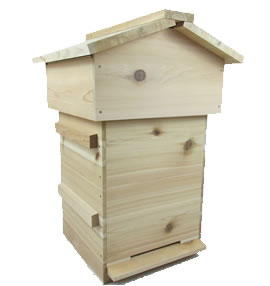Beehive Outer Cover: Understanding Its Importance and Functions in Beekeeping
A beehive outer cover, also known as a hive lid or roof, is a crucial component of a beehive used in beekeeping. Positioned atop the hive, the outer cover provides protection from the elements, insulation, and ventilation to the hive. Understanding the importance and functions of the beehive outer cover is essential for beekeepers to maintain healthy and productive bee colonies.
Importance of Beehive Outer Cover
The beehive outer cover serves several important purposes in beekeeping:
- Protection from Elements: The outer cover shields the hive from rain, wind, snow, and other environmental factors that could potentially harm the bees or damage the hive structure. It helps maintain a dry and sheltered environment within the hive.
- Insulation: By providing an additional layer of insulation, the outer cover helps regulate temperature within the hive, keeping the bees warm in winter and cool in summer. Proper insulation is essential for colony survival, especially during extreme weather conditions.
- Ventilation: Outer covers are designed with ventilation holes or gaps that allow for air circulation within the hive. Adequate ventilation helps remove excess heat, moisture, and odors from the hive, creating a healthier environment for the bees.
- Weight Distribution: Outer covers distribute the weight of the hive evenly, helping to prevent warping or damage to the hive structure. They provide stability and support to the hive, especially when stacked with multiple hive bodies and supers.
Functions of Beehive Outer Cover
The beehive outer cover serves several important functions in beekeeping:
- Weather Protection: Outer covers provide a protective barrier against rain, snow, wind, and extreme temperatures, helping to keep the hive dry and secure. They prevent water from entering the hive and causing moisture-related problems for the bees.
- Insulation: Outer covers help regulate temperature within the hive by providing an additional layer of insulation. They trap heat generated by the bees and prevent heat loss during cold weather, ensuring that the colony remains warm and active.
- Ventilation: Ventilation holes or gaps in outer covers allow for air circulation within the hive, preventing excess heat buildup and promoting air exchange. Proper ventilation is crucial for maintaining optimal humidity levels and reducing the risk of heat stress or respiratory issues for the bees.
- Roofing: Outer covers serve as the roof of the hive, protecting it from sun, rain, and other weather elements. They help keep the hive dry and free from moisture-related problems such as mold, mildew, or wood rot.
Conclusion
In conclusion, the beehive outer cover is a vital component of a beehive, providing protection, insulation, and ventilation to the hive. Understanding the importance and functions of the outer cover is essential for beekeepers to maintain healthy and productive bee colonies.
Whether you're a beginner or experienced beekeeper, ensuring that your hive has a well-designed and properly installed outer cover is crucial for successful beekeeping and the well-being of your bees.



